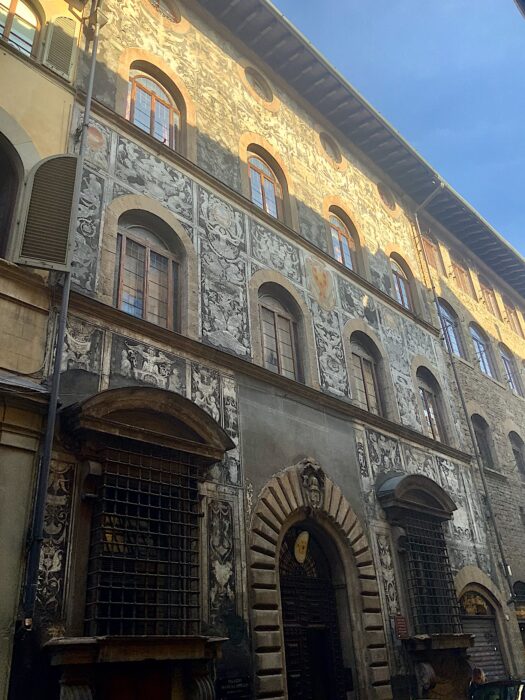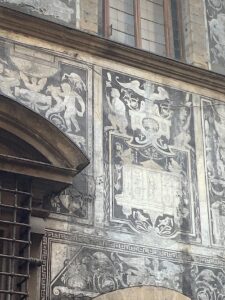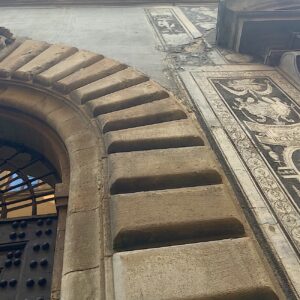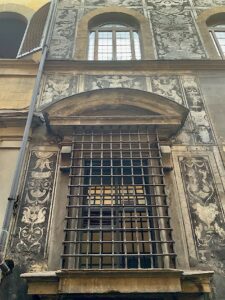
Age
Century XVI
Designers
Bernardo Buontalenti, Ferdinando Pietramellara
Palazzo Bianca Cappello is located in Via Maggio in the Oltrarno district. In this place in the first half of the fifteenth century there was a house belonging to the Corbinelli family, which in 1566 was bought by Piero Buonaventuri, husband of the Venetian patrician Bianca Cappello. When she was a widow, using the financial support of her lover, Duke Francesco de ‘Medici (then married in 1579), undertook a work of modernization and embellishment of the fifteenth-century building, thanks to the work of Bernardo Buontalenti (1573-1578). The architect chose to preserve the large windows already existing on the upper floors, intervening instead on the ground floor; this was radically renovated with two beautiful kneeling windows (off the axis with respect to the fifteenth-century windows on the upper floor) and with a door framed by arched ashlars, surmounted by the coat of arms of the Cappello family. Under the new windowsills, he inserted the motif of the bat, sculpted with outstretched wings, which later became recurrent in Buontalenti’s architecture and more generally employed as a symbolic figure for the protection and care of the house. The rest of the façade was instead renovated thanks to a rich graffiti decoration, made by Bernardino Poccetti between 1574 and 1579 (according to other sources between 1579 and 1580 approximately). Bianca Cappello soon remised the house to the Hospital of Santa Maria Nuova (1584), which sold it to Giovanni Riccardi in 1586. The palace was owned by this family until the early nineteenth century and it passed in 1828 to the Bonaccorsi Perini, then to the Altoviti, then in 1906 to the Peruzzi de ‘Medici, and subsequently to the Pecchioli and others, until the current owners. It is evident that the graffiti on the façade have aroused most interest over time; subjected to periodic treatments, it was subjected to restorations in 1885, in 1928-1929 (works carried out by Amedeo Benini under the direction of the engineer Ferdinando Pietramellara and with the agreement of the Superintendence), and then in 1986 by Antonio Forcellino. In particular, this last intervention was due to the high state of decay following the restoration of 1920, when a cement, different from the original mortar, composed of black-pigmented lime, was used that had made the surface powdery. Regarding the decoration system, white frames adapting to the architectural score of the building are present. Within this scheme, the individual decorative elements are as varied and bizarre as harpies, greyhounds, hookah smokers, satyrs, hippogriffs, cherubs, monkeys, rams, and male and female figures. It is also interesting to underline the presence of fresco interventions: in the center of the façade, the Medici coat of arms surmounted by the grand-ducal crown, on the sides two ovals with the theme of the swan and a motto alluding both to the whiteness of the animal and to the name of Bianca Cappello. Also noteworthy is the presence of an underground corridor now no longer accessible, always built during the intervention of Buontalenti, which would have put the residence in communication with the nearby Palazzo Pitti. Today the Palazzo Bianca Cappello belongs to private persons and is used as a luxury hotel accommodation facility.
The arched and round decorations of the windows, the kneeling windows, the string courses and the arched ashlar above the door are in Pietra Serena Sandstone (Pietra Bigia variety). The façade is plastered with graffiti and fresco decorations (coat of arms and tondos).


